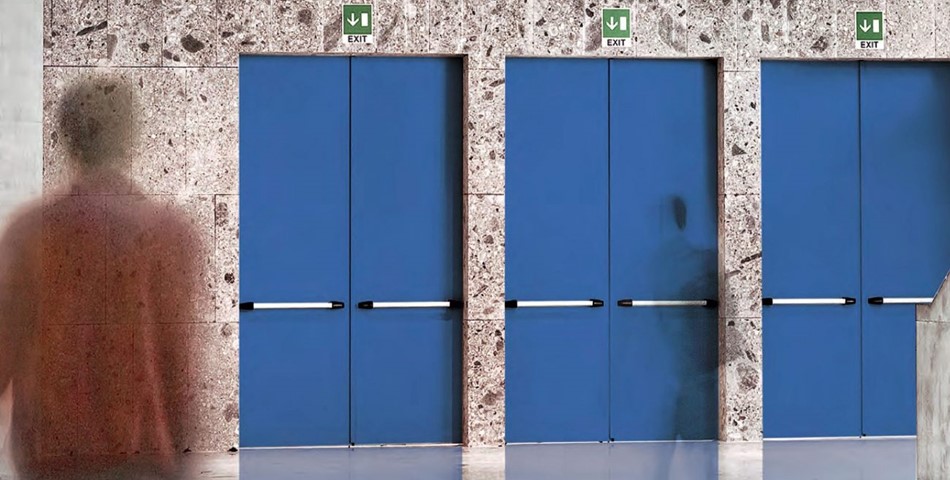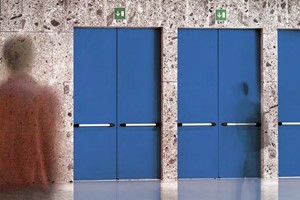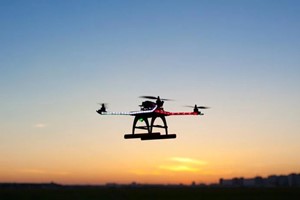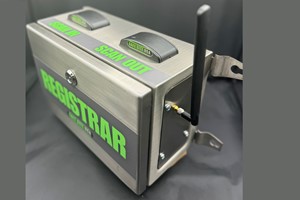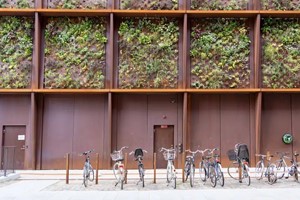Fire doors are installed in designated locations where a fire hazard exists in order to prevent it's propagation from one area to another. They allow the structure to maintain its integrity in order to protect occupants who are not close to the initial fire and help them have some sufficient time to evacuate, relocate or defend in place. In general, and as per international norms, Fire doors are required to be present where medium and high hazards exist.
The most commonly recognized fire doors locations are the following areas:
- Stairwells
- Openings in wall separating buildings
- Mechanical rooms (generators, boilers, etc...)
- Vertical access panels
- Egress route in buildings
- Electrical rooms (high and low current enclosures)
Fire doors are life-saving products and must be fitted and installed correctly by certified experts.
Norms & Standards: The Difference between EN & UL
Fire doors installation and specifications are governed by the most known standards when it comes to firefighting: NFPA80 and EN1634-1 (American and European norms). The table below identifies some of the major differences between the above-mentioned standards, when it comes to fire doors specifications, tests and approvals. Based on which standard is followed in buildings and structures, the selected fire doors would have different characteristics that will come to play in case a fire takes place.
What you need to know
- Fire doors are part of the fire safety setting, and cannot be considered separately.
It is important to note that no code is better than the other; both approaches can be reliable, if well applied. The most important factor is to stick to only one fire safety code and to apply its requirements on the entire building, from A to Z. Mixing between codes can generate loopholes, which we will explain hereafter. European and American standards for fire doors, do not come alone. They come with a rigid set of fire safety standards and norms that have to be applied in their constructions. Thus, a fire door with characteristics suitable in one, might not be suitable in the other’s settings.
- The US standard assumes a sprinkler system is installed.
For instance, the fire hose test is required by the American fire doors’ norms due to the fact that they assume the presence of a sprinkler system (as per the US’ general fire safety norms). This procedure tests the fire door’s fire heat resistance while cold water (generated from the hose) is discharged on it. On the other hand, this test is not required when it comes to the European standard because their standard does not force the installation of a sprinkler system, instead it recommends the installation of a smoke management system. Having a sprinkler system installed (as per American norms), makes it feasible, and even logical, to only have the door tested from the inner side of the protected enclosure. This assumption means that the door will only need to maintain itself from the side of the fire, given that from the other side, the sprinkler system will be acting properly. It is assumed that the sprinkler would forbid the fire from spreading from the outer side of the door, protecting the enclosure where the fire has started. In contrast, this requirement is not enough when it comes to the European norm where the facility lacks a sprinkler system. Thus, in Europe, the requirements are tougher on that point, enforcing rigorous regulations on both sides of the door.


- Europe has an unmatched concern for smoke management that sets it apart
On the other hand, when it comes to the European norm that relies on a smoke management system and strategy (considering that most of the casualties that occur are caused by inhaling poisonous gases), a smoke sealant is mandatory for each door. This sealant expands in case of extra-heat, filling any gap that may be present between the door and the structure holding it, and preventing smoke from going from one side to another.
- EN & UL – While there are some differences, there is a lot more common grounds
Despite some of the differences that have been mentioned, the standards have many common points:
a) Both Standards stress on the need for regular maintenance and periodic checks.
b) They also agree that Fire doors are meant to be in an open or closed position depending on the fire exit plan established in the protected facility.
c) In technical areas, all fire rated doors must always be closed (through a spring that may be self-contained). Whereas, in corridors and hallways, they are usually meant to be in an open position.
d) In case the doors are held open, a fire door holder is required to keep the door in the needed open position. This Holder must be released (usually by a fire alarm interface) in case of fire, ensuring that the structure is properly divided into small compartments forbidding the fast travel of fire.
e) Fire rated doors installed on exits, hallways, corridors etc... must open to the exit side in order to facilitate the escape procedure. Using a panic bar instead of the traditional handle, makes this feature easier.
f) Signs are needed on each fire door in order to identify it and to indicate its normal position (opened or closed).
Conclusion
In conclusion, fire rated doors play a major part in the passive fire protection procedure. It is mandatory to know that installing them as per design and standard guidelines is a must, so they can be used properly by the facility occupants. Each standard has its own norms and regulations. Depending on the philosophy adopted, these norms are verified by rigorous tests, and approvals must be obtained for each fire rated door.




